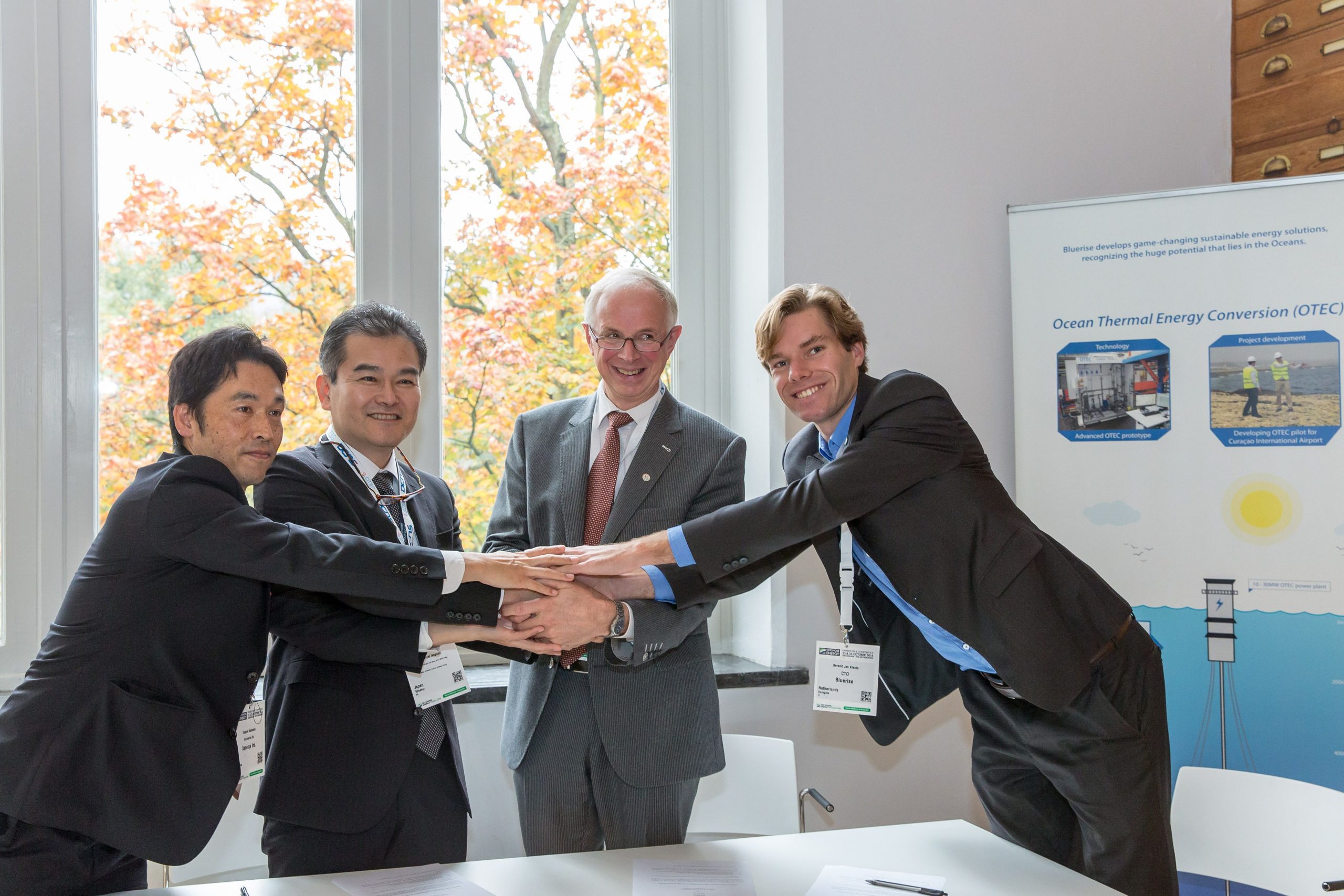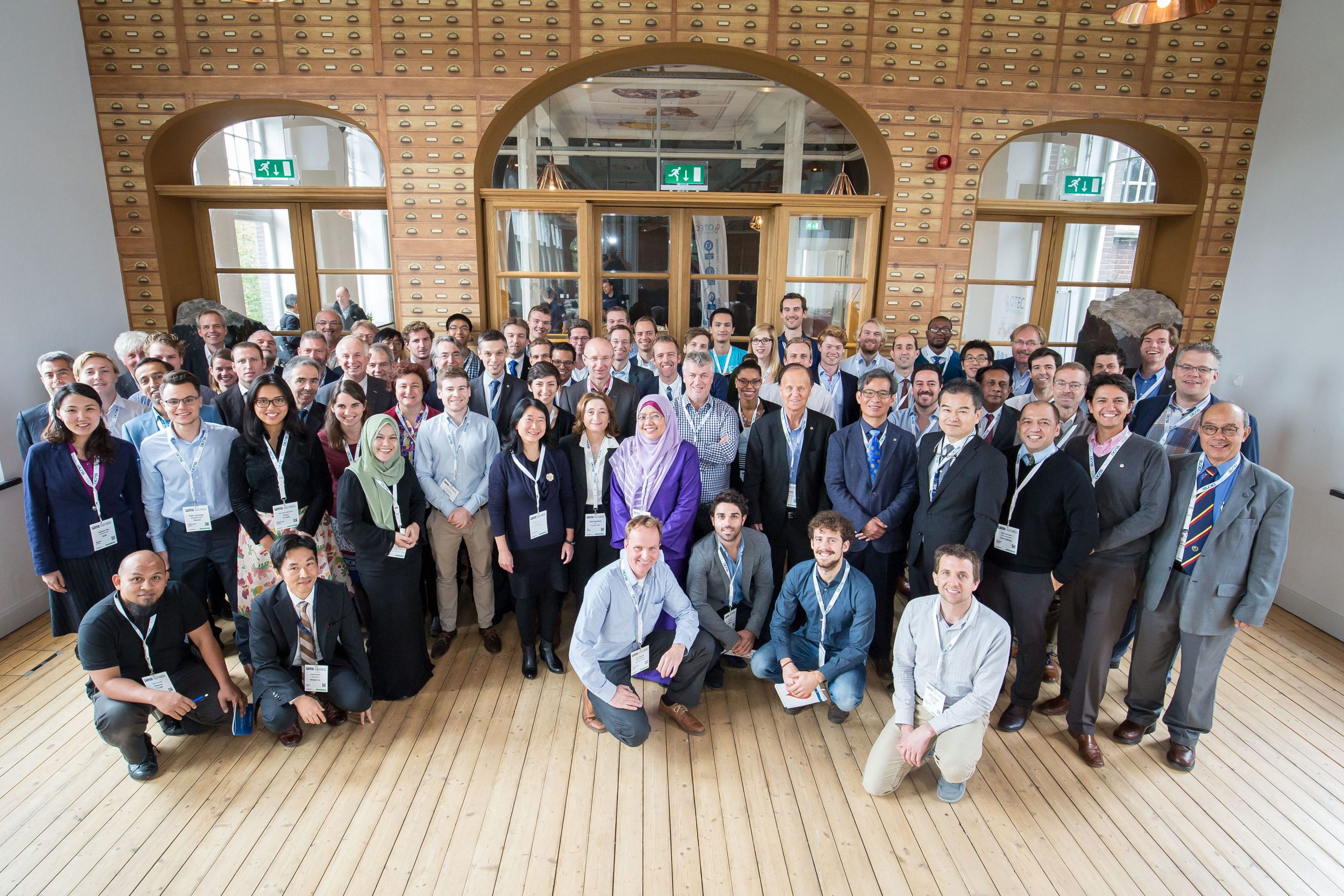Deep oceans have an enormous potential for power generation. The technology, Ocean Thermal Energy Conversion (OTEC), is only just beginning.
Some eighty visitors gathered in the TU Science Centre last Tuesday. Many of them had travelled from as far as Korea or Japan to the misty and cloud-covered city of Delft to attend the 4th International OTEC Symposium. Koreans and Japanese are the veterans in this field. Europeans, operating on far-away tropical islands, follow in their wake. Among them is the Delft scale-up Bluerise that organised the meeting.
The sun warms the ocean. In a large belt along the equator, the temperature difference between the ocean surface and at a depth of about a kilometre, amounts to 20 degrees Celsius or more. Such a temperature difference is enough to make a suitable fluid (like ammonia) boil, drive a turbine, and condensate. That is the principle of OTEC. The turbine usually drives a generator producing electricity. Desalinated water (for drinking or agriculture) and cold seawater for air-conditioning or marine culture are useful by-products.
OTEC has the largest potential of all forms of ocean energy. The latest estimate is 7 TW (7 million megawatts) of electrical power. Unfortunately, the potential is biggest where the fewest people live: in the Pacific Ocean. Still, for islands in tropical oceans and for countries in Asia, Africa and South-America bordering deep seas, OTEC is a promising technology. The first OTEC power plant dates back to 1930 in Cuba. The technology re-emerged during the 1970s energy crisis. But, like other forms of green energy, research was abandoned when oil prices dropped. The Paris Climate Agreement has revived the interest in this promising form of sustainable energy with a modest demand for space.
Despite the promising potential, only a handful of installations is operational. The OTEC project map mentions Japan (30 kW in Saga, 100 kW near Okinawa), Korea (20 kW near Gosung), Hawaii (105 kW) and the island of Reunion (15 kW). Another ten projects worldwide are in various stages of preparation.


So what’s holding back the development? In short: the price. Although different speakers mentioned various power prices, the general picture is this: current prices are high (like 40-50 cents/kWh), but tariffs are expected to come down to more competitive rates when technology scales up to several megawatts. For that to happen, however, more research and investment is needed.
According to Dr. Yasuyuki Ikegami from Saga University, Japan government funding is required to scale up to the first 1 MW OTEC power plant. Private funding could help the technology to the next level of 10 MW.
Technological challenges include optimising heat exchangers, preventing fouling, constructing ocean-proof floating power platforms and reducing the installation’s energy need (typically 35% of the power produced flows back into the pumps, said Dr. Hyeon-Ju Kim).
On the island of Curaçao, the Delft scale-up Bluerise plans to use the cold seawater not only for electricity generation but also for a district cooling system at the island’s airport. An earlier master study has shown how cold seawater could be used to produce drinking water using condensation. By stacking functions and providing services to the tourist sector, Bluerise aims to make OTEC commercially viable.
Another way to stimulate OTEC development is by stressing its merits as a baseload power in a sustainable energy mix. Unlike solar or wind energy, OTEC is a constant source of power. Project engineer Anne-Marije Zwerver (Bluerise) showed how an OTEC baseload could help to balance production and demand of power on an island, while reducing the emissions and nuisances of the ubiquitous diesel generators.
More info: http://www.otecfoundation.org/



Comments are closed.